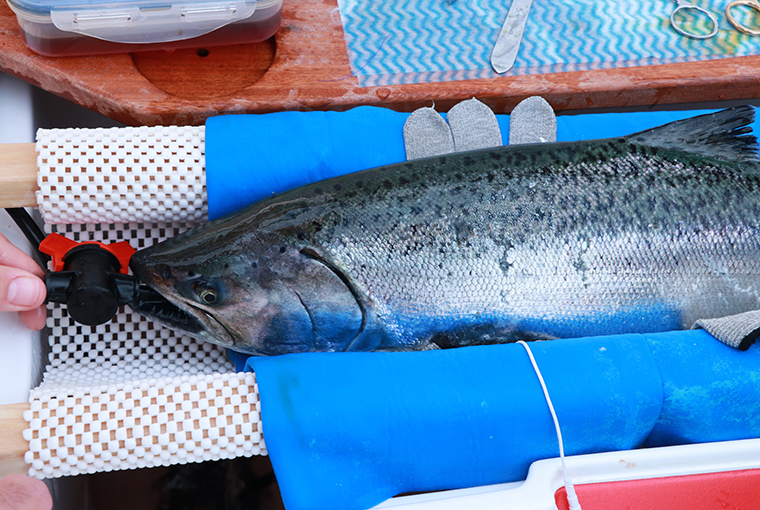
Part of the fun in fishing for Great Lakes chinook salmon is the mystery of finding out where they are on any given day. Sometimes fish in 40 feet of water will disappear to 200-plus feet by mid-morning, while others remain all week in a certain area, only to vanish by the weekend. Or, what about when salmon come out of the woodwork in front of rivers the morning of a late-summer rainstorm, when the area was barren the night before?
In many ways, these fish are an enigma. As much as we can predict where the wind will shift fish or guess when they will start to stage off spawning rivers, there is still an element of mystery behind kings that is intriguing for even the most seasoned angler. If these mysteries have boggled your mind, you’re not alone – and it’s not just anglers who are interested in solving them.
GLIER research
The Great Lakes Institute for Environmental Research (GLIER) is a research-focused department at the University of Windsor made up of environmental scientists and graduate students who seek to inform fisheries policy and management through their research.
Silviya Ivanova leads a chinook salmon acoustic telemetry tagging project with GLIER. She is interested in understanding the movements of chinook through their life. Through the use of telemetry, Ivanova is able to learn not only where fish go in the lake, but also how deep, how fast, and at what times of the year they move.
After years of researching salmon, Ivanova notes “It seems like Lake Ontario isn’t big enough for them.” One tagged fish crossed Lake Ontario several times in one year, swimming more than 900 kilometres.
This past fall, I joined Silviya’s field team with Captain “Moby” Nick Foxcroft out of Port Credit on a mission to tag and release juvenile chinook so they could become data providers for years to come.
Gathering info
Acoustic telemetry research works using active tags and passive sensors called receivers. Data is constantly transmitted wirelessly using a radio signal from internal tags in fish, but is only captured when that fish passes close enough to a receiver. As more resources go towards growing the network of receivers (called the array), triangulating fish locations between receivers becomes more frequent and accurate.
Array coverage across the Great Lakes varies, with lakes Erie, Huron, and Ontario being nearly fully gridded. The Great Lakes Acoustic Telemetry Observation System (GLATOS) takes care of the receiver network and handles the data management side of things. Partnering organizations, like GLIER, have access to the data, and collaborate on keeping the array operational.
The tagging process
The tagging process used by Ivanova and her team has been developed over the years in collaboration between fishing vessels, charter operators, and research scientists. Apart from the challenge of catching suitable fish between 14 and 24 inches, there is also the issue of holding the fish and completing surgery quickly enough for them to be released in good health. Fish may be deemed unsuitable for tagging if they are outside this size range or are damaged during capture. While on board, I got a first hand look at the use of a well-oiled and effective method of implanting tags.
Why telemetry?
Given the highly geographic nature of understanding fish behaviour and habitats, telemetry is the ultimate tool for researchers to get into a fish’s world. Chinooks are not the only fish that telemetry tagging is useful for monitoring. Doctor Sarah Larocque (DFO) completed similar work with GLIER on Atlantic and chinook salmon, and brown trout, which is where I first became aware of GLIER’s activities.
In 2018, I did a similar ride-along with Sarah and her team while tagging brown trout on Lake Ontario’s south shore. This research looked to determine the range of browns, which, at the time were thought to be homebodies by nature. Years later, Larocque has found that, like lake trout, browns too will migrate large distances during different seasons to spawn and feed.
Research on the Great Lakes is highly collaborative with US groups such as the US Department of the Interior, the US Geological Survey, and GLATOS. Across these groups it is well-recognized that because fish don’t carry passports, understanding lake-wide migration patterns is critical for management.
Helping a healthy fishery
Ivanova stresses that the purpose of their work is not to provide suggestions, but rather “good science for the purpose of properly informing management discussions.”
Ontario Federation of Anglers and Hunters Fisheries Biologist Adam Weir, who sits on all 14 active Fisheries Management Zone (FMZ) councils in the province, echoes the importance of telemetry for discussions about fishing season dates, harvest limits, and more. He notes that while any one scientific finding from a study will not directly change policy or management independently, GLIER’s telemetry “is informing the discussions, particularly at the advisory council level in a very significant way.”
Rewards for catching tagged fish
Anglers are encouraged to follow the details on the tag and return it to the GLIER team, so that data can be captured from the fish. While you won’t receive a financial reward, you’ll receive a map showing the fish’s travels as a thank you.
Learn more:
Originally published in the June-July issue 2024 of Ontario OUT of DOORS
For more on salmon, click here
Click here for more outdoors news


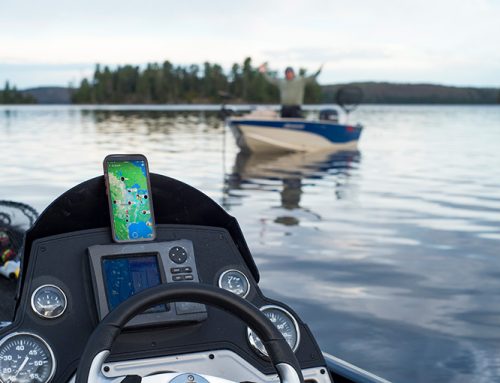
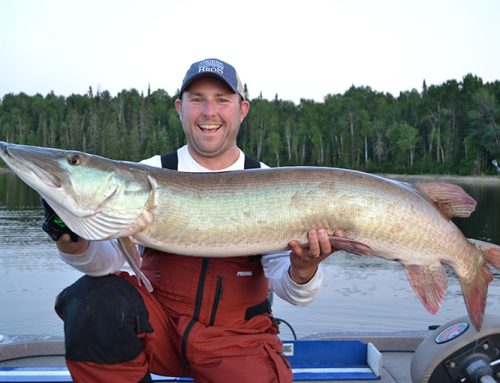
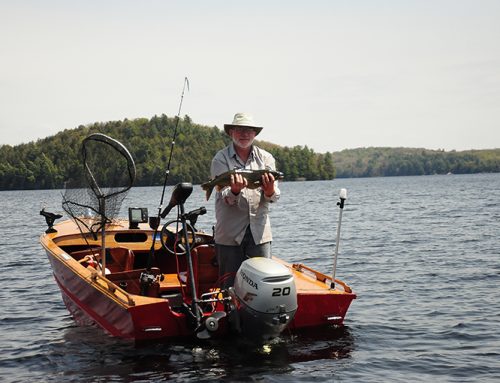
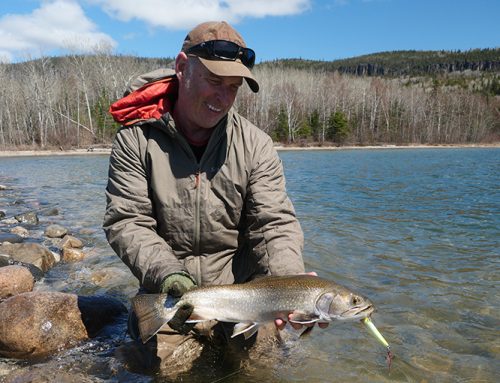
Leave A Comment